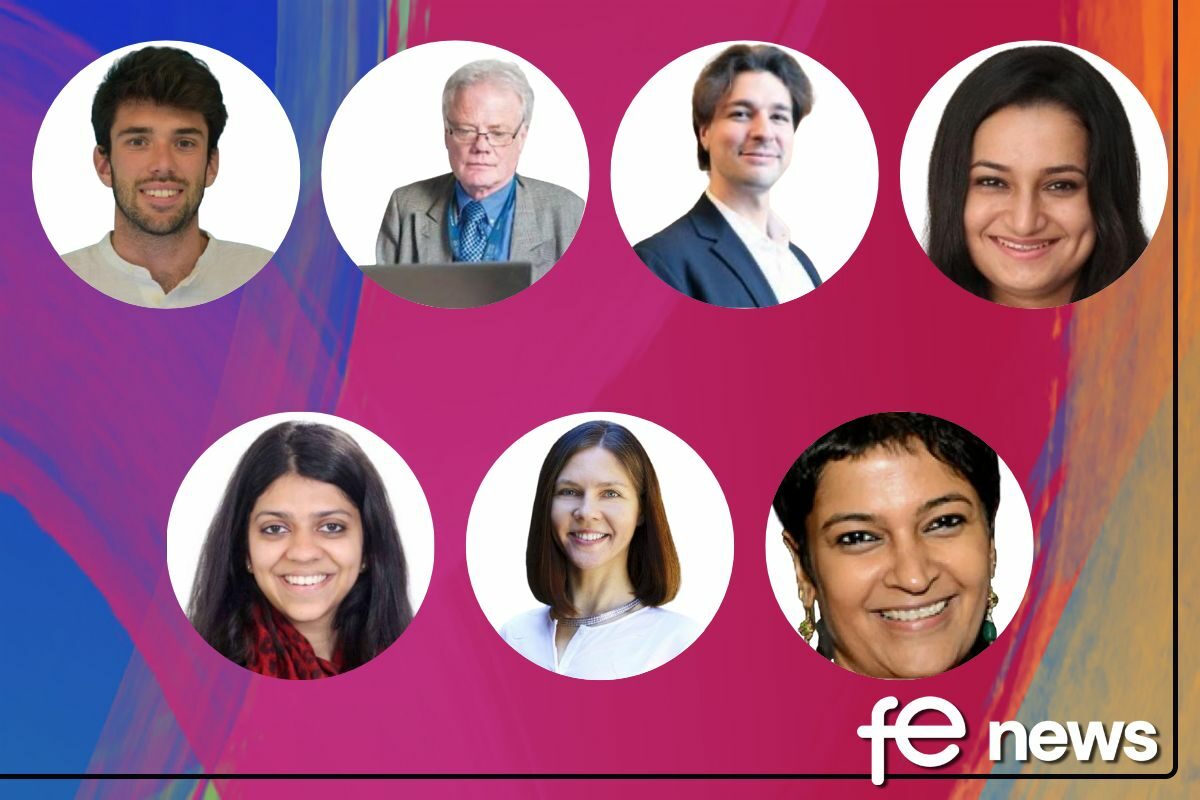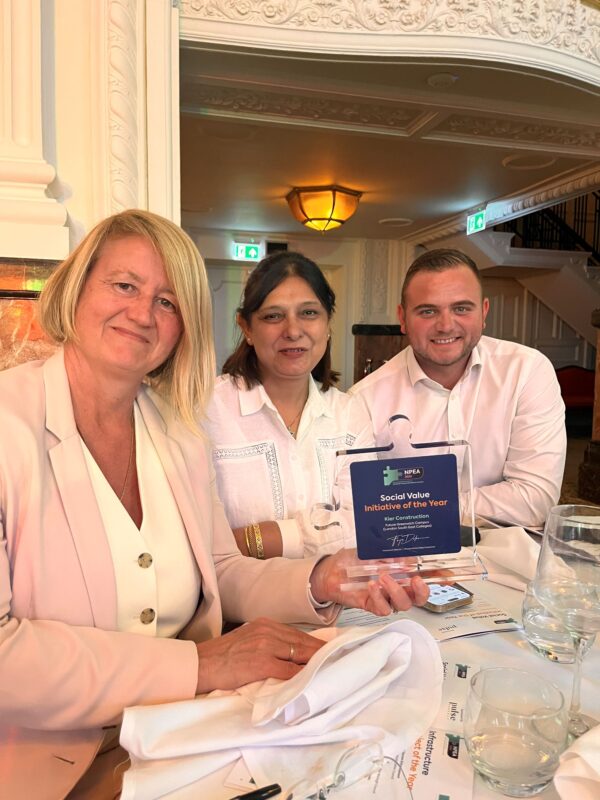Bridging the Digital Literacy Gender Gap in Developing Countries

The G20 context, 2022
The G20 is hosted in Indonesia this year. It has not been an easy year for travel, and the Indonesian presidency has done well to maintain a full agenda, largely through zoom and social media. The work of the technical groups is now largely complete, and it’s over to the ministers and heads of state to meet, consider and respond to our various recommendations.
The three priority areas of the Indonesian presidency have been:
- Global Health Architecture,
- Digital Transformation,
- Sustainable Energy Transition.
For some years I have been involved with the Think Tank and research arm of the G20, the T20. Initially working on skills and the future of work. More recently the T20 has increased its consideration of cyber issues, forming a Task Force which has focused on Meaningful Digital Connectivity, Cyber security, Empowerment.
As is stated in the T20 Communique, this has been a year of ‘a multitude of shocks: periodic financial crises, geopolitical power shifts, the impact of climate change, the pandemic and the ripple effects of the Russia Ukraine war and related economic sanctions’. G 20 leaders are seeking to use this global disruption to promote what they describe as an inclusive recovery.
I have been fortunate, this year, to work with a very strong, international team on a Policy Brief, Bridging the Digital Literacy Gender Gap in Developing Countries.
Here is a summary.
Our Position
The record on digital inclusion is clear: women have been left behind. Within certain economies, cultures, and regions, the digital literacy gender gap prevents women from unlocking better learning opportunities and economic prospects.
This policy brief measures the relationship between digital literacy gaps and sociocultural factors. It then describes why digital literacy gaps start forming in childhood and how most digital skilling programmes fail to address the obstacles women face in becoming a part of the digital world. It concludes by pinpointing solutions to these issues and urging the G20 and other countries to address the unique challenges of women’s digital literacy.
The Challenge
Women lag behind men in a range of indicators associated with internet access and use. The World Wide Web Foundation found that the digital gender gap had barely improved since 2011 in lower and middle-income countries. According to the report, globally, men are 21 percent more likely to be online than women, a gap that rises to 52 percent in least developed countries.
The problem with women’s access to digital resources does not reside in the medium itself but with the social context in which women are located. Factors such as lack of agency, education inequality, and digital spaces being viewed as dangerous and unsafe for women widen the gender digital gap. These barriers intersect across the supply side, demand side, as well as legal and regulatory domains. For instance, costs associated with internet use remain prohibitive across countries for both men and women.
Still, women’s relatively lower access to economic resources and independence, and their relative time poverty exacerbate exclusion—particularly for older women, those living in rural areas, and those who are poorer.
Moreover, labour markets and education can further reinforce gender stereotypes about appropriate roles and jobs for women and men. In many contexts, technical and vocational education is seen as primarily a male preserve or is heavily segregated in terms of employment type (e.g., mechanics for males and hairdressing for females).
Many of these factors can be found at the regional level defined within countries and tend to persist over time. For instance, one of the most striking findings identified in the literature is that the historical roots of contemporary regional gender-specific roles (cultural factors) can sometimes be traced back to pre-industrial times, shaped by prevailing social structures (Alesina et al., 2013; Giuliano, 2018; Sorgner, 2021).
Thus, local cultural factors impacting gender equality may persist even when societies transition to a more advanced stage of development. However, national digital literacy programmes often fail to acknowledge and address these issues. As a result, the gender gap in digital skills and literacy remains a formidable barrier to girls and women benefiting from new economic opportunities, vital information such as health- related advice and guidance, and overall social and public engagement.
Digital literacy and skilling programmes run by countries thus have to be evaluated to determine whether they sufficiently address the unique challenges that women face to become a part of the digital world (Sorgner, 2019).
The potential for digital gender equality is greatly enhanced as the world rapidly adopts artificial intelligence for education, technological advancement, and economic productivity. Digital literacy may unlock better learning opportunities, skills development, and economic prospects. The Indonesian presidency has identified Digital Skills
and Digital Literacy as one of the priority issues for the Digital Economy Working Group.
Therefore, the complex interplay of socio-cultural factors and constraints around gender roles
needs nuanced and coordinated policy responses at the global level.
Our Brief continues with a detailed statistical analysis which:
- Quantifies the relationship between social norms and the gender gap in digital literacy, and
- Examines the age dimensions of the digital literacy gender gap
We go on to consider digital literacy programmes’ common flaws:
- Most digital literacy programmes fail to address women’s social and cultural challenges, especially in developing countries. The lack of agency, paternalistic attitudes, and controlled access to online spaces limit the ability of women to engage meaningfully in the digital ecosystem. But only a few programmes take into account this problem. The Internet Saathi program launched by the Tata Trust for rural women in India provides an excellent model for addressing this challenge where digitally trained women train other women, contributing to a growing network of digitally skilled women in rural areas.
- The design of digital literacy programmes fails to define specific targets to reduce the
gender gap. While India’s PMGDISHA states that women candidates will be given preference, it has no gender-specific targets. Such literacy initiatives can widen the gender gap in digital adoption and use. Indeed, the eligible households can nominate one person from their family to enroll in this programme, and for reasons described in this policy brief, families tend to appoint their sons rather than daughters. Specifying targets, as placed by the EU for STEM (Science, Technology, Engineering and Mathematics) education of female students, have resulted in a progressive change in the education and employment of women. Similarly, the Republic of Korea placed focus on the training of working women, who were forced to operate from home during the Covid-19 outbreak to fulfil care responsibilities. Targeted and monitored initiatives yield better outcomes than loose statements on a desired objective. - Digital literacy programmes, as highlighted above, fail to address the systemic gender
gap in education and consequently digital literacy. Several countries have tried to integrate digital skills in the K-12 education curriculum. Saudi Arabia has recognised digital literacy as a “basic skill” alongside numeracy and literacy under its Human Capability Development Program Delivery Plan under vision 2030. Kenya’s Digital Literacy Programme is also a major undertaking that seeks to integrate ICTs across all levels of education in a phased manner. However, gender biases—in society, within families, by instructors and policy makers—continue to act as obstacles, preventing women from accessing or completing formal education, which also spill into a lack of digital skills. - Digital literacy programmes are often inadequate in providing a complete understanding of online experiences. Meaningful engagement in the digital world is much more than watching video content or exchanging messages on social media. Most digital literacy programmes are limited in what they offer and mostly comprise training to operate devices, exchange emails, access e-government services, and pay digitally. Crucial elements of online safety, cyber security, and privacy are beyond the scope of these literacy programmes. Indonesia’s Makin Cakap Digital is a good example of a programme that holds widespread interactive digital literacy classes centred around Safe and Ethical Digital Media, Digital Media Proficiency, and Digital Media Culture.
We make a number of policy recommendations:
- Create a safer online space for women. The internet being viewed as an unsafe space for girls and women leads to limiting factors such as lack of agency and lack of or limited and controlled access to online spaces. Digital literacy programmes should be designed to feature crucial issues such as online safety and privacy and include women-centric content such as resources on reproductive health and information regarding recourse from cybercrimes. This will equip women with the knowledge and digital skills to navigate the online space and will contribute to creating a safer online environment for them. Involving women in education and training at the grassroots level also helps alleviate certain hesitations stemming from social and cultural biases.
- Create a database on children’s access to and use of digital resources, with a regional
focus. A major gap to overcome as a priority is data and evidence that capture digital engagement across the life course. For instance, there is barely any reliable population-based data on children’s access to and use of digital resources, disaggregated by geography, gender, and household wealth. Addressing gender gaps between women and men is unlikely to be reversed at a fast enough scale if robust foundations for a healthy digital environment are not built during childhood and adolescence in age-appropriate formats. Moreover, gender-disaggregated data should be made available at the level of regions defined within countries rather than at the level of countries. This will allow for a better understanding of the regional differences in gender equality, their determinants, and the developments over time. In this way, it will be possible to establish a monitoring system to detect changes in the situation of gender equality and to undertake corrective actions in a timely manner, if necessary. - Leverage partnerships with the private sector and non-government organisations to
design and implement digital literacy programmes Involving the community, especially other women, in the transfer of skills helps address socio-cultural barriers and allows women to engage with society and unlock economic opportunities. Several examples, including the Canadian Digital Literacy Exchange Program and the Internet Saathi model in India, were able to actively create these partnerships to successfully address the challenges listed above. - Adopt Gender Specific Targets and Monitoring Progress. While digital literacy programmes often recognise women as beneficiaries, they fail to set gender-specific targets. Coupled with the lack of gender-disaggregated data collection, these programmes’ impact cannot be sufficiently evaluated. Given the strong persistence of regional gender-specific roles over time, it is unlikely that short-term measures, particularly if they do not account for local conditions, will successfully promote gender equality. Digital literacy programmes must be designed with gender-specific targets and mandates to track their progress, allowing policymakers to assess their implementation and develop appropriate responses.
- Initiatives to promote gender equality, including educational programmes in digital literacy, should entail a location-based approach. The determinants of gender equality are at least partly defined at a rather narrow level of regions defined within countries rather than at a broad level of nations. However, the existing initiatives to promote gender equality often disregard regional variations in the determinants of gender equality. While promoting gender equality is a global objective, it can best be achieved by considering local factors that might impact gender equality.
This article is written by:
- Giacomo Gattorno, UN Women
- Paul Grainger, UCL
- Alberto Guidi, ISPI
- Shiva Kanwar, ICRIER
- Mansi Kedia, ICRIER
- Alina Sorgner, Cabot University, IZA, IfW Kiel
- Ramya Subrahmanian, Unicef Office of Research – Innocenti
The full article can be found here.
The final communiqué of the T20 is here.











Responses